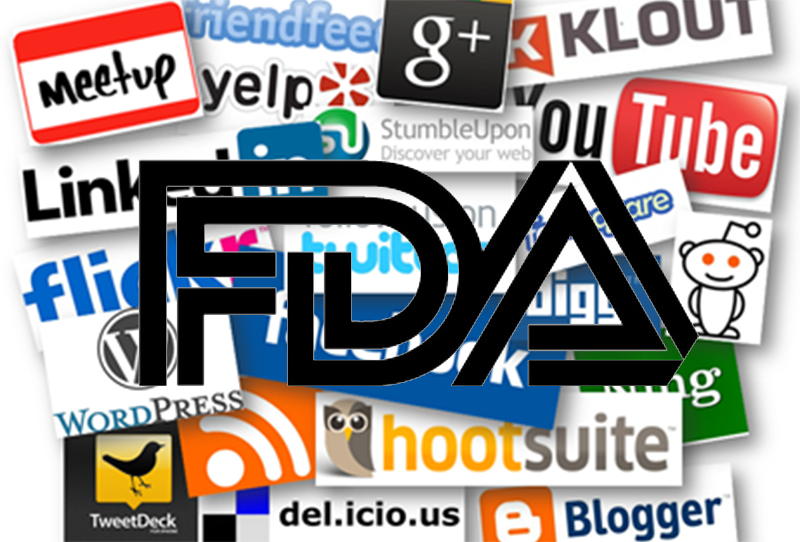eyeforpharma Philadelphia 2014
Make customer centricity work: smart pharma mindsets, models and technology that will seal commercial success
Nudges, Needs, Necessities – It’s All Old News To Me
Emma D'arcy, digital and patient advocate, offers up her thoughts on the FDA's latest social media guidelines, and explains why she believes that ship has already sailed...

The New Year brings with it resolutions – to nudge yourself into behaviors. One of mine was to read my monthly book club assignment in good time rather than in desperation trying to catch up with my peers the night before the monthly review. And this only being January, I met that need … here’s the synopsis of this month’s choice:
A bunch of the academically-elite sit in their ivory towers, agonizing over how to achieve yet more intellectual purity, while deliberating ignoring the real world around them.
This is Herman Hesse’s Nobel Prize-winning novel The Glass Bead Game, but you’d be mistaken for thinking it describes the team at the FDA responsible for spending the last four years putting together yet more ‘guidance’ for how the healthcare industry might use social media.
Unsurprisingly, everyone now has a point of view on this point of view (the pharma marketing blogosphere is full of them) and the agonizing and pontification goes on. It’s the usual farrago of opinion. And I’ve been asked for mine.
I’m sorry – but isn’t this a little ridiculous?
The fact is, that outside of the ivory tower, of the long-winded interpretations of what draft guidance might mean (even in territories such as Europe where the FDA has no jurisdiction whatsoever), life goes on. Just as life goes on for those living with – or engaged in the treatment of – illness, or the improvement of health.
For four years we’ve been waiting for the regulatory authorities to come out of their purgatory. In the real world (and yes – even in the absence of guidance from an austere American body) those individuals and organizations who here have just gotten on with it.
HCPs and more enlightened healthcare organizations have walked away from the intellectual procrastination and run confidently into making social media an acceptable activity of daily living.
Praise must go to Sanofi for their diabetes 360 social media behaviors, to Philips Healthcare for their exemplary use of LinkedIn, to individuals like Bertalan Mesko who have championed physician use of Twitter for medical education, and Gunther Eysenbach who founded the Journal of Medical Internet Research and Medicine 2.0 conference. My colleagues, Duncan Arbour, Alex Brock and Sarah Brown also deserve recognition for taking on social media challenges such as how to manage adverse event reporting during social media listening. These are the people out there in the real world – making the news, not reporting it. With or without guidelines, pioneers push forwards anyway.
With such activities come messy parts, uncomfortable moments, mistakes, frailties – the outcomes of which are better, transparent, more productive relationships and insights about our health and transition to patient centricity.
I no longer articulate and lobby about the ‘empowered patient’ because after a certain point, empowerment ceases to be a theory, it becomes a necessity.
Accordingly, yet more guidelines are in real-terms a nudge for the procrastinators not the practitioners, but FDA guidance or no FDA guidance, the world has already changed and, fear it or not, we’re living in the era of participatory medicine.
Participatory medicine is:
- Described by the shift from illness to wellness with patients at the center taking greater responsibility for the management of their health.
- Driven by digital innovation and the socialization of health data – tools, trackers, technology have disrupted and innovated how we find better solutions for the health crises in the digital age.
- Demonstrated by more equitable access to healthcare and information as driven by patient need and a more consumer-type approach to solutions.
The participatory patient is:
- Enabled to collaborate and connect with healthcare providers and other patients.
- Enthusiastic to share their health story for the greater good.
- Equipped with a proficient competency to aggregate multiple digital channels to expedite health solutions.
The participatory physician is:
- Digitally literate – 51% of the medical community will be digital natives in 2014; aged 27—46, had their entire secondary and medical education in the digital setting and 55% ‘always’ rely on digital sources.
- Deterred by the perception of clinical inaccuracy in the digital environment and unsure how to contribute to better provision of content.
- Dialogue driven – the patrician model of medicine has been creatively destroyed. HCPs are enthused by more meaningful conversation and informed communication with patients and the pharmaceutical industry.
So. There’s my ‘point of view’.
Actually it isn’t my opinion, it’s more an observation of what is happening beyond the ivory tower – out here in the real world, in the era of participatory medicine, where we’ve nudged about our needs for long enough. Social media is a necessity not a nice-to have. And guidance or no, it was inevitable that the pioneers on both sides of the healthcare fence would forge ahead.
eyeforpharma Philadelphia 2014
Make customer centricity work: smart pharma mindsets, models and technology that will seal commercial success
